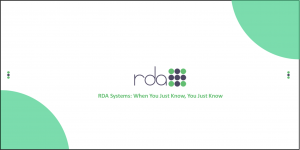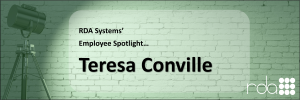If you aim to create a successful organization, you cannot overlook the people who are at the heart of everything you do. To achieve success, employers must understand the employee experience —from how they view your employer brand to what they experience on the job each day.
In today’s workplace, ensuring a positive employee experience has become a multi-billion-dollar industry. Businesses are not the only entities looking to improve their employee experience either. Municipalities, school districts, and other government and non-profit organizations invest in tools such as surveys, case management, feedback, portals, and knowledge management.
But what is employee experience and how can employers ensure that their staff enjoy optimal satisfaction throughout their employee lifecycle?
What is Employee Experience?
Put simply, employee experience encompasses every stage of an individual’s involvement with your organization, from the very first moment they hear of you to well past the day they leave your employment.
In today’s constantly evolving job market, employee experience has expanded beyond an HR project. It has become an organization-wide initiative that aims to help staff not only be more productive and effective, but also happier, healthier, and more engaged in the workplace.
Why is employee experience important?
Employees want to feel valued and have a sense of purpose and belonging. Consequently, organizations that adopt an active strategy can foster commitment through positive employee experiences to increase retention, employment brand, productivity, employee satisfaction, innovation, and customer success, while also decreasing absenteeism and turnover.
If your organization focuses on people first, the rest of the pieces will often fall into place.
5 Critical Stages of the Employee Experience Lifecycle
So, what are the different stages of employee experience? Moreover, what challenges impact each stage of the employee lifecycle and how can you address each one?
- Attraction & Recruitment
The employee experience begins the moment potential candidates hear of your organization. They will recognize and even engage with your employer brand before they ever personally meet you. Attraction can take place on social media, your website, or through reviews from past and current employees on sites like Glassdoor. Thus, it is critical to cultivate a positive workplace culture that will naturally attract new talent.
Recruitment provides the first opportunity to interact and build meaningful relationships with the candidates who will eventually become part of your organization. How you approach the hiring process—from interviews to the various forms of technology used to process paperwork and sign documents—will impact both your ability to identify the best candidates and your new hire’s confidence in you as an employer.
- Onboarding
First impressions matter. Almost a third of all employees tend to quit during the onboarding process, which is why this stage of the employee lifecycle is so important to get right when it comes to employee experience.
The first step is to set clear expectations about the onboarding process itself, as well as the new hire’s responsibilities within your organization. Typically, the onboarding process can take up to three months to complete. Be transparent and consider providing an itinerary outlining the various trainings, milestones, and other requirements they will need to meet to become a productive, contributing member of your team.
This is also an ideal time to establish trust and create meaningful relationships. You can help new hires feel supported, welcomed, and positive about starting in their new role. Welcome videos, one-on-one meetings, and other efforts to show that you are available and approachable go a long way in establishing rapport.
You can also foster a sense of belonging within the organization by introducing new hires to co-workers, organizing team-building events, and providing information about the organization’s history and mission.
You will also want to equip them with everything they need to succeed in their new role, including information, training, tools, efficient work processes, and technology to get the job done. Clear instructions and streamlined processes allow new hires to hit the ground running so they can excel faster and enjoy their work experience sooner.
- Engagement & Retention
It may come as no surprise, but research has found that feeling engaged and happy at work is likely to increase productivity. Not only that, but happier staff tend to stick around longer, reducing turnover and absenteeism that avoids unnecessary recruitment costs.
So, how do you help employees feel engaged and happy in the workplace? Possible efforts include investing in employee wellbeing initiatives, offering attractive job benefits, providing interesting and purpose-driven work, recognizing hard work and achievements, investing in good management, and inviting feedback and acting on it.
Anything you can do to make your employees feel valued, give them a sense of purpose, and create a safe, supportive, and comfortable workplace that allows for flexibility and efficiency can increase engagement and improve retention in the long run.
- Performance & Development
As an employer, you play a key role in helping your employees develop and grow in their roles. Not only should you provide time for learning, but you should also work with each employee to define clear learning and development pathways.
You will find that not all employees have the same goals, so it is important that you create individual development plans based on the specific goals of each member of your team. You can then work on the corresponding timelines to help them develop the skills they will need to succeed within your organization that are also in alignment with their own short and long-term goals.
Performance reviews, incentives, training opportunities, and positive social experiences can all work together to inspire your staff and give them a clear vision of how they can be successful as a contributing member of your team for years to come.
- Separation
Whether it is due to family, personal circumstances, relocation, retirement, career change, or some other reason, departures are inevitable even in the best organizations with a strong employer brand.
For that reason, it is important to have a plan to manage this final stage of the employee experience lifecycle. Have a system in place to streamline paperwork, finances, benefits, hiring a replacement, handing over responsibilities, and more.
You should also strive to nurture a positive relationship with all former employees. They can play a key role in transitioning knowledge and responsibilities, and you can maintain the possibility that they will return in the future. These former employees can also provide positive reviews of your organization, which contributes to your employer brand and your ability to attract new hires.
Perhaps the most important part of the separation stage is the opportunity to understand why the employee is leaving and identify areas of improvement within your organization that can increase retention and improve the employee experience for those who remain. Exit surveys and interviews are a great way to get this type of feedback.
How to Improve Employee Experience
One of the greatest benefits of technology is the opportunity it has given us to increase efficiency and eliminate the tedious work that often detracts from a positive employee experience.
At RDA Systems, we find great satisfaction in improving employee experience within organizations like yours by offering services such as HR strategy and ERP support. Our enterprise resource planning (ERP) software helps organizations automate and manage core business processes so that you can devote more time to cultivating positive employee experiences.
Whether you are focused on recruitment, talent retention, or some other HR function, you can harness technology to help improve the employee experience throughout any of the five stages of the employee lifecycle, helping you to capitalize on all the benefits of putting people first within your organization.





